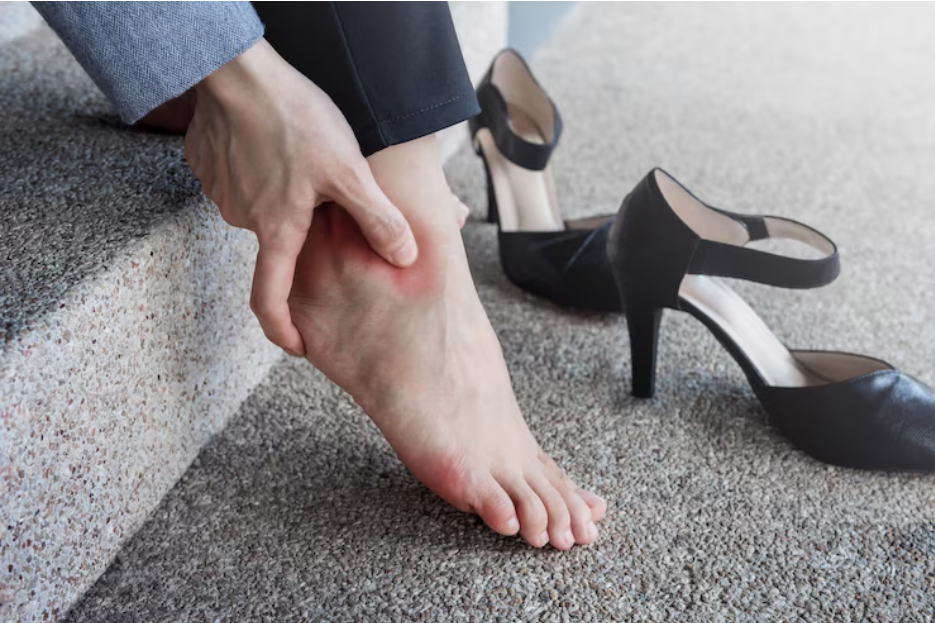
Plantar fasciitis can be a real pain in the foot – literally! If you’ve ever experienced that sharp, stabbing sensation in your heel when you take your first steps in the morning, you know exactly what I’m talking about. But fear not! While plantar fasciitis can be a stubborn condition, there are lifestyle changes you can make that can help alleviate the pain and get you back on your feet. Let’s dive into some practical tips that might just make all the difference. For expert consultation, visit Neuragenex NFPM in Scottsdale.
Table of Contents
- 1 Understanding Plantar Fasciitis
- 2 Tip 1: Invest in Supportive Footwear
- 3 Tip 2: Stretch it Out
- 4 Tip 3: Ice, Ice Baby
- 5 Tip 4: Maintain a Healthy Weight
- 6 Tip 5: Supportive Inserts
- 7 Tip 6: Rest and Recovery
- 8 Tip 7: Consider Physical Therapy
- 9 Tip 8: Mind Your Posture
- 10 Tip 9: Stay Hydrated
- 11 Tip 10: Listen to Your Body
Understanding Plantar Fasciitis
Before we jump into the lifestyle changes, let’s quickly understand what plantar fasciitis actually is. The plantar fascia is a thick band of tissue that runs along the bottom of your foot, connecting your heel bone to your toes. When this tissue becomes inflamed or irritated, it can lead to plantar fasciitis. This condition is often characterized by heel pain, especially in the morning or after long periods of rest.
Tip 1: Invest in Supportive Footwear
One of the first lifestyle changes you should consider if you’re dealing with plantar fasciitis is to take a close look at your footwear. Wearing unsupportive shoes, like flip-flops or old sneakers, can exacerbate the problem by putting extra strain on your feet. Instead, opt for shoes with good arch support and cushioning to help absorb shock and reduce pressure on the plantar fascia. Look for brands that specialize in supportive footwear, and don’t be afraid to invest a little extra money in a pair that will provide the comfort and support your feet need.
Tip 2: Stretch it Out
Stretching is another key component of managing plantar fasciitis. Tight muscles in your calves and feet can contribute to the problem, so incorporating stretching exercises into your daily routine can help alleviate tension and improve flexibility. Simple stretches like calf stretches, toe stretches, and towel stretches can all be beneficial. Aim to stretch for at least 10-15 minutes each day, focusing on the muscles in your lower legs and feet.
Tip 3: Ice, Ice Baby
When it comes to reducing inflammation and relieving pain, ice can be your best friend. Applying an ice pack to the affected area for 15-20 minutes several times a day can help reduce swelling and numb the pain associated with plantar fasciitis. Just be sure to wrap the ice pack in a thin towel to protect your skin, and avoid applying ice directly to the heel for prolonged periods to prevent frostbite.
Tip 4: Maintain a Healthy Weight
Carrying excess weight can put added strain on your feet and exacerbate the symptoms of plantar fasciitis. If you’re overweight or obese, losing even a small amount of weight can help reduce pressure on your feet and improve your overall foot health. Focus on maintaining a balanced diet and incorporating regular exercise into your routine to achieve and maintain a healthy weight. Your feet will thank you!
Tip 5: Supportive Inserts
In addition to wearing supportive shoes, using orthotic inserts can provide extra cushioning and support for your feet. These inserts can help distribute pressure more evenly across your foot and reduce strain on the plantar fascia. You can find over-the-counter orthotic inserts at most drugstores, or you can opt for custom-made inserts for a more personalized fit. Experiment with different types of inserts to see what works best for you.
Tip 6: Rest and Recovery
Sometimes, the best thing you can do for your feet is to simply give them a break. Resting and allowing your body time to recover is essential for managing plantar fasciitis. Avoid activities that exacerbate the pain, like running or high-impact sports, and give your feet plenty of time to heal. Incorporate rest days into your exercise routine, and listen to your body if you start to experience pain or discomfort.
Tip 7: Consider Physical Therapy
If lifestyle changes alone aren’t providing the relief you need, it may be time to consider seeking professional help. Physical therapy can be incredibly beneficial for individuals with plantar fasciitis, as it focuses on strengthening the muscles in your feet and improving flexibility and range of motion. A physical therapist can also provide targeted treatments like massage, ultrasound therapy, and stretching exercises to help alleviate pain and promote healing.
Tip 8: Mind Your Posture
Believe it or not, your posture can have a significant impact on the health of your feet. Poor posture can throw off your body’s alignment and put extra strain on your feet, exacerbating the symptoms of plantar fasciitis. Pay attention to your posture throughout the day, whether you’re sitting at your desk, standing in line, or walking down the street. Practice good posture habits, like keeping your shoulders back and your head aligned with your spine, to reduce strain on your feet and improve overall foot health.
Tip 9: Stay Hydrated
Hydration might not be the first thing that comes to mind when you think about managing plantar fasciitis, but it’s actually incredibly important. Dehydration can lead to muscle cramps and stiffness, which can exacerbate the symptoms of plantar fasciitis. Make sure you’re drinking plenty of water throughout the day to keep your muscles and connective tissues hydrated and functioning properly. Aim for at least eight glasses of water a day, and adjust your intake based on your activity level and the climate you live in.
Tip 10: Listen to Your Body
Last but certainly not least, listen to your body. If something doesn’t feel right, don’t ignore it. Pushing through the pain can do more harm than good and prolong your recovery time. Pay attention to how your feet feel during and after activities, and adjust your routine accordingly. Be patient with yourself, and don’t get discouraged if progress is slow. Plantar fasciitis can be a stubborn condition, but with the right lifestyle changes and a little bit of patience, you can find relief and get back to doing the things you love.
Plantar fasciitis can be a real pain in the foot, but it doesn’t have to rule your life. By making simple lifestyle changes like investing in supportive footwear, incorporating stretching exercises into your routine, and maintaining a healthy weight, you can effectively manage your symptoms and get back on your feet. Remember to listen to your body, be patient with yourself, and don’t hesitate to seek professional help if you need it. With time and perseverance, you can overcome plantar fasciitis and get back to living your life to the fullest.


